This article was medically reviewed by Luba Lee, FNP-BC, MS and by wikiHow staff writer, Hannah Madden. Luba Lee, FNP-BC is a Board-Certified Family Nurse Practitioner (FNP) and educator in Tennessee with over a decade of clinical experience. Luba has certifications in Pediatric Advanced Life Support (PALS), Emergency Medicine, Advanced Cardiac Life Support (ACLS), Team Building, and Critical Care Nursing. She received her Master of Science in Nursing (MSN) from the University of Tennessee in 2006.
There are 16 references cited in this article, which can be found at the bottom of the page.
This article has been viewed 64,547 times.
External bleeding is easy to spot: you know when you get a cut or an injury that bleeds on the outside of your body. Internal bleeding, on the other hand, is a little more difficult to diagnose, and it can be tough to tell when you’re bleeding on the inside. Fortunately, there are a list of symptoms that you can watch out for to tell whether or not you are bleeding internally. In this article, we’ll go over all of the symptoms of internal bleeding, as well as how a doctor might diagnose you and what causes internal bleeding. And remember: if you believe you are having a medical emergency, call emergency services right away.
Things You Should Know
- Symptoms of internal bleeding include cramping, swelling, bruising, blood in vomit, urine, or stool, and dizziness.
- The most common cause of internal bleeding is trauma or injury. You may also have internal bleeding due to blood disorders or GI issues.
- To diagnose your internal bleeding, your doctor will start with a physical exam. They may also order a CT scan or an angiography.
- Treatment of internal bleeding depends on how severe it is. For mild cases, you may just need rest. For severe cases, you may need surgery.
Steps
Symptoms
-
1Abdominal cramping Internal bleeding in the stomach or GI tract will often cause cramping and pain in your torso. If your cramps are severe and only get worse, seek medical attention right away.[1] X Research source
-
2Swelling or tightness If you are hit in the stomach or experience some other blunt force trauma, internal bleeding may change the way your abdomen feels. Lightly press on your stomach around the area you were injured. If it feels swollen, painful, tight, full, or more tense than usual, you may be bleeding internally.[2] X Trustworthy Source PubMed Central Journal archive from the U.S. National Institutes of Health Go to source
- In some instances, you may even be able to see blood moving towards the skin on your abdomen. If you notice this, call an ambulance immediately.
- Blood in the abdomen can be a sign that you have ruptured one of your internal organs, which can be incredibly dangerous if not treated promptly.
Advertisement -
3Chest pain Internal bleeding can cause you to go into shock, which may make your chest hurt. If you experience sharp pain or a dull ache in your chest, call emergency services.[3] X Trustworthy Source MedlinePlus Collection of medical information sourced from the US National Library of Medicine Go to source
-
4Bruising Most cases of internal bleeding come after trauma or injury that can lead to hemorrhaging. Locate the area where you injured yourself and look for any immediate or dark bruising in the area. This, alongside intense pain, can be a sign of very serious internal bleeding.[4] X Trustworthy Source MedlinePlus Collection of medical information sourced from the US National Library of Medicine Go to source
- If the pain is more severe than what you may expect from the visible injuries, there’s a chance that there is a more serious injury that you cannot see. It’s always safer to assume something more is wrong than it is to assume you are overreacting to an injury.
- Significant pain in an area may also be a sign of a broken bone or another ailment. You should always seek help if you're in a lot of pain, but it's not necessarily due to internal bleeding.
- If you’re taking a blood thinner, you may have an increased risk of bruising and internal bleeding.
-
5Fatigue Blood loss can make you feel more tired than usual. You might feel overly exhausted or unable to stay awake, which could be signs that your body is losing blood rapidly.[5] X Trustworthy Source Cleveland Clinic Educational website from one of the world's leading hospitals Go to source
-
6Pale or clammy skin The blood loss caused by internal bleeding can lead to weakness, sweating, and pale skin. While you should be able to determine if you are sweating profusely with ease, check or get someone else to check your skin for paleness or clamminess as further signs of possible internal bleeding.[6] X Trustworthy Source MedlinePlus Collection of medical information sourced from the US National Library of Medicine Go to source
- These symptoms may become more severe and more obvious if you try to stand up or move around too much.
-
7Shortness of breath While injury might cause some short-term breathlessness, the blood loss associated with internal bleeding may make breathing difficult after the shock of the injury has disappeared. Focus on breathing regularly and staying calm to avoid hyperventilation. If you notice you are having trouble breathing, seek medical assistance.[7] X Research source
- If you cannot breathe easily, find someone who is able to keep you calm, help you breathe and watch over you while you wait for help to arrive. Breathing difficulties can be incredibly dangerous if not resolved quickly.
- Depending on how you've injured yourself, you may have just had the wind knocked out of you. Stay calm and your breathing may return to normal soon after.
-
8Tingling or paralysis Watch for tingling or paralysis in your face, arms, or legs since these could all be signs of bleeding around your brain. If you notice these symptoms, immediately call 911 so you don’t suffer any brain damage.[8] X Trustworthy Source Cleveland Clinic Educational website from one of the world's leading hospitals Go to source
- Other symptoms of cerebral bleeding may include trouble speaking, loss of coordination, and a sudden severe headache.
-
9Dizziness or confusion When you lose a lot of blood very rapidly, you may feel lightheaded, dizzy, or confused about where you are. Take note of these symptoms and contact emergency services if they persist.[9] X Research source
- Going into shock after an injury can also sometimes cause confusion. While it doesn’t necessarily mean you have internal bleeding, confusion is a sign of a serious injury.
-
10Bright red vomit Depending on the cause of your internal bleeding, the blood loss itself or even the pain of injury may cause nausea or vomiting. If your vomit is bright red, you might be throwing up blood. If you already suspect internal bleeding due to other symptoms, you need to call emergency services right away.[10] X Research source
- On the other hand, if you suspect internal bleeding and your vomit looks like coffee grounds, call an ambulance. Vomit that looks like coffee grounds can indicate internal bleeding in your GI tract.
-
11Peeing blood The blood from an internal injury anywhere in your digestive system will often be visible in your urine. If you see any blood in the toilet after urinating, seek medical help immediately. Though there are many causes of bloody urine (or red urine), including UTIs and certain medications, it's best to be safe (especially if you suspect internal bleeding due to other symptoms).[11] X Research source
-
12Tarry or black stool If you have internal bleeding in your digestive tract, the blood may exit via your feces. If you go to the bathroom and your stool looks black or sticky like tar, you may have internal bleeding.[12] X Research source
Causes
-
1Blunt force trauma The most common cause of internal bleeding is trauma or injury to your body. When you are injured, it can tear a blood vessel, causing you to bleed internally (even if you aren’t bleeding externally).[13] X Trustworthy Source MedlinePlus Collection of medical information sourced from the US National Library of Medicine Go to source
-
2GI conditions Certain gastrointestinal disorders can cause internal bleeding. If you deal with colon polyps, colitis, Crohn's disease, or stomach ulcers, you may have internal bleeding because of it.[14] X Research source
-
3Bleeding disorders Bleeding disorders make it hard for your body to create blood clots and stop bleeding. These disorders can turn minor injuries into serious internal bleeding episodes. Bleeding disorders include things like acquired platelet function defects, disseminated intravascular coagulation (DIC), prothrombin deficiency, hemophilia C, Glanzmann disease, idiopathic thrombocytopenic purpura (ITP), and Von Willebrand disease.[15] X Trustworthy Source MedlinePlus Collection of medical information sourced from the US National Library of Medicine Go to source
-
4Aneurysm If your blood vessels are weak, they can bulge over time and form pockets of blood. Typically, life-threatening aneurysms happen in the brain, and they often have no symptoms.[16] X Trustworthy Source American Heart Association Leading nonprofit that funds medical research and public education Go to source
-
5Chronic high blood pressure If you struggle with high blood pressure and you have for a long time, your blood vessels may become damaged. After a while, this can cause internal bleeding.[17] X Trustworthy Source Mayo Clinic Educational website from one of the world's leading hospitals Go to source
-
6Certain medications Blood thinners can affect the way your body clots blood, which can lead to internal bleeding. Similarly, over-the-counter pain medicines, like aspirin, can damage the lining of your stomach and cause internal bleeding.[18] X Trustworthy Source PubMed Central Journal archive from the U.S. National Institutes of Health Go to source
-
7Ectopic pregnancy Ectopic pregnancy happens when a fertilized egg gets stuck on its way to the uterus. Usually, this egg will be stuck in the fallopian tube. If a fallopian tube ruptures inside the body, it can cause internal bleeding.[19] X Research source
-
8Surgery If you recently had a surgery, your surgeon likely stopped all the bleeding inside your body before they completed the operation. However, if they missed something or your stitches ruptured, you may continue to bleed internally.[20] X Research source
Diagnosis
-
1Physical exam Your doctor will ask you about your symptoms and examine you from the outside to see if they can spot any symptoms of internal bleeding. They will also ask you about your medical history, including any recent injuries you’ve had and any medications that you’re taking.[21] X Trustworthy Source Cleveland Clinic Educational website from one of the world's leading hospitals Go to source
-
2CT scan A CT scan is an imaging machine that can see bones, tissues, and blood vessels.[22] X Trustworthy Source Johns Hopkins Medicine Official resource database of the world-leading Johns Hopkins Hospital Go to source Your doctor may use this to diagnose internal bleeding and find the source of the blood loss inside your body.
-
3Angiography Angiography is a special imaging test that can examine individual blood vessels. During this test, the area will be numbed and your doctor will insert a catheter into an artery in your body. They will use a dye to color your arteries and blood vessels, and then they’ll take images of the vessels to see which ones (if any) are damaged.[23] X Trustworthy Source National Health Service (UK) Public healthcare system of the UK Go to source
Treatment
-
1Rest For mild internal bleeding that isn’t life-threatening, medical treatment may not be needed. Instead, your doctor may recommend rest and relaxation to let your body stop the bleeding on its own. Your doctor will make this decision based on the severity of the bleeding and your medical history.[24] X Trustworthy Source Johns Hopkins Medicine Official resource database of the world-leading Johns Hopkins Hospital Go to source
-
2Medication If the bleeding is caused by ulcers or other GI issues, your doctor may prescribe medication to treat the problem area. Medication can help lessen the bleeding over time and prevent future bleeding for chronic issues.[25] X Trustworthy Source Johns Hopkins Medicine Official resource database of the world-leading Johns Hopkins Hospital Go to source
-
3Surgery In some cases, the bleeding is so severe that your doctor may recommend surgery to stop it. This may happen if the bleed is life-threatening or near a major organ, like your brain.[26] X Research source
Warnings
- Internal bleeding can be very dangerous and potentially fatal if not treated quickly and properly. If you suspect you are bleeding internally, it is always safer to call an ambulance immediately.[27] X Trustworthy Source MedlinePlus Collection of medical information sourced from the US National Library of Medicine Go to source⧼thumbs_response⧽
You Might Also Like
 How to Stop Rectal Bleeding
How to Stop Rectal Bleeding
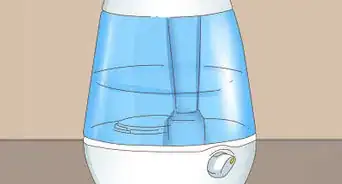

 Cut the Tip of Your Finger Off? What to Do Next
Cut the Tip of Your Finger Off? What to Do Next




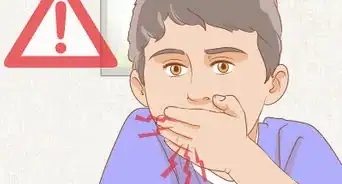


-Step-13-Version-3.webp)


References
- ↑ https://utswmed.org/medblog/gi-bleeding-children/
- ↑ https://www.ncbi.nlm.nih.gov/pmc/articles/PMC3414076/
- ↑ https://medlineplus.gov/ency/article/000045.htm
- ↑ https://medlineplus.gov/ency/article/000045.htm
- ↑ https://my.clevelandclinic.org/health/symptoms/21654-hemorrhage
- ↑ https://medlineplus.gov/ency/article/000045.htm
- ↑ https://utswmed.org/medblog/gi-bleeding-children/
- ↑ https://my.clevelandclinic.org/health/symptoms/21654-hemorrhage
- ↑ https://utswmed.org/medblog/gi-bleeding-children/
- ↑ https://utswmed.org/medblog/gi-bleeding-children/
- ↑ https://www.medicinenet.com/internal_bleeding/article.htm#how_is_internal_bleeding_diagnosed
- ↑ https://www.medicinenet.com/internal_bleeding/article.htm#how_is_internal_bleeding_diagnosed
- ↑ https://medlineplus.gov/ency/article/000045.htm
- ↑ https://utswmed.org/medblog/gi-bleeding-children/
- ↑ https://medlineplus.gov/ency/article/001304.htm
- ↑ https://www.heart.org/en/health-topics/aortic-aneurysm/what-is-an-aneurysm
- ↑ https://www.mayoclinic.org/diseases-conditions/high-blood-pressure/in-depth/high-blood-pressure/art-20045868
- ↑ https://pubmed.ncbi.nlm.nih.gov/31076795/
- ↑ https://patient.info/pregnancy/ectopic-pregnancy-leaflet
- ↑ https://www.drugs.com/cg/postoperative-bleeding.html
- ↑ https://my.clevelandclinic.org/health/diseases/14480-brain-bleed-hemorrhage-intracranial-hemorrhage
- ↑ https://www.hopkinsmedicine.org/health/treatment-tests-and-therapies/computed-tomography-ct-scan
- ↑ https://www.nhs.uk/conditions/angiography/what-happens/
- ↑ https://www.hopkinsmedicine.org/health/conditions-and-diseases/gastrointestinal-bleeding-or-blood-in-the-stool
- ↑ https://www.hopkinsmedicine.org/health/conditions-and-diseases/gastrointestinal-bleeding-or-blood-in-the-stool
- ↑ https://www.aurorahealthcare.org/services/neuroscience/brain-skull-base-care/brain-hemorrhage/
- ↑ https://medlineplus.gov/ency/article/000045.htm
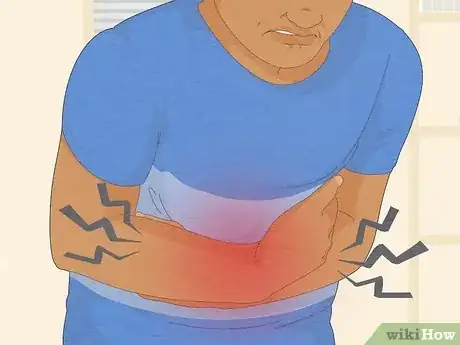
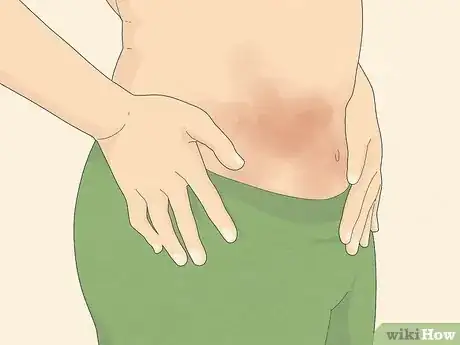
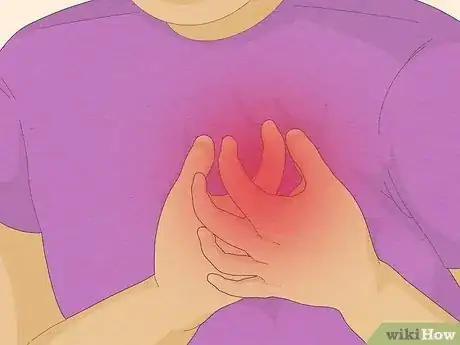
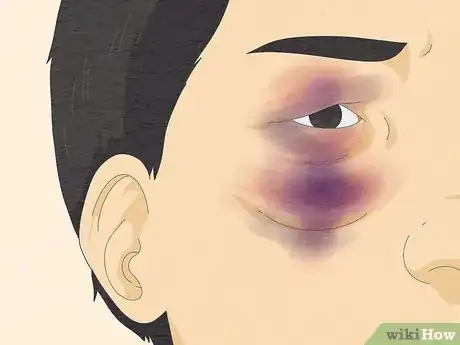
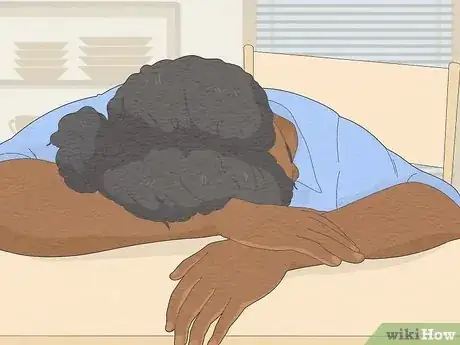







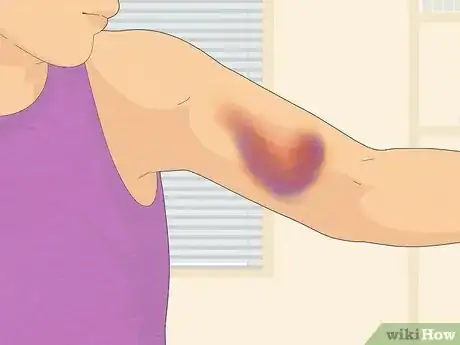

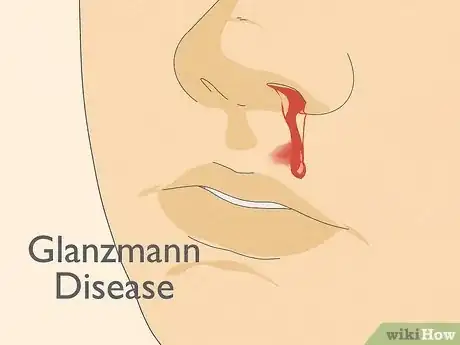
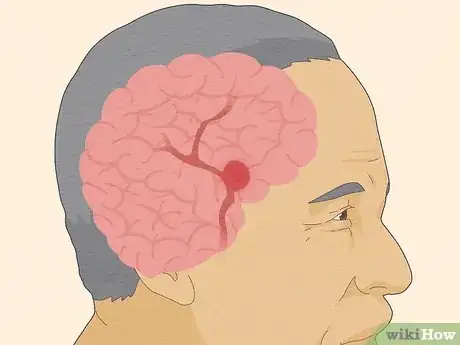

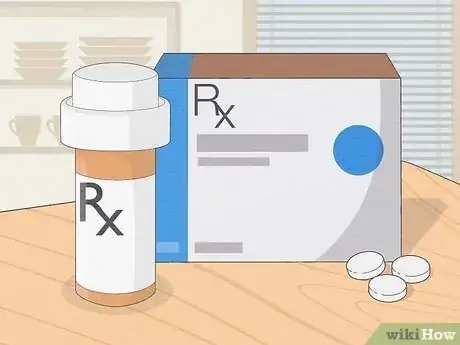
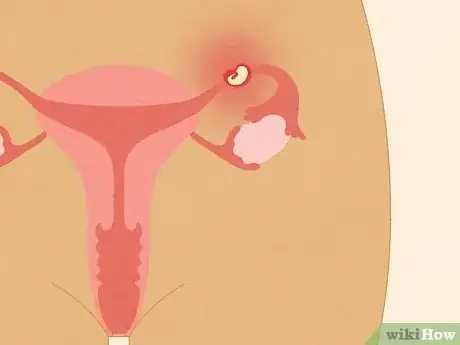
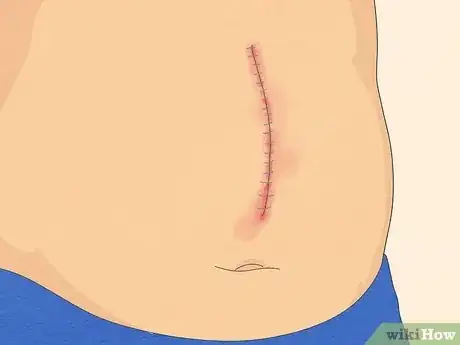
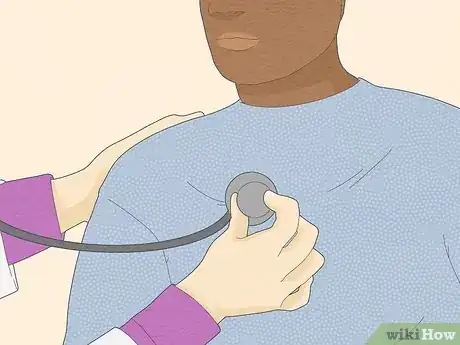
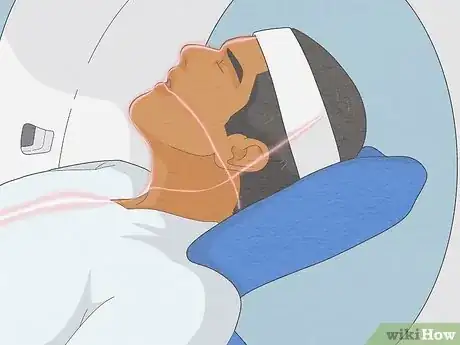
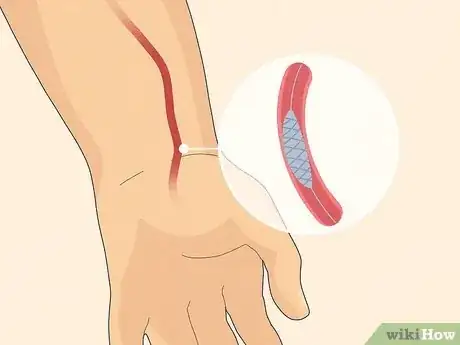

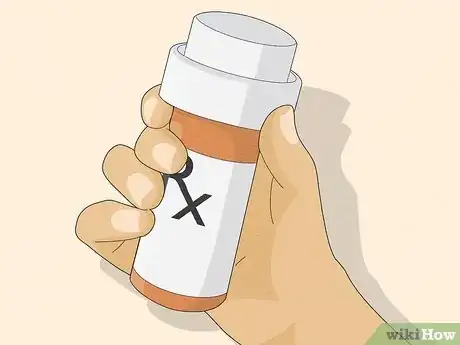
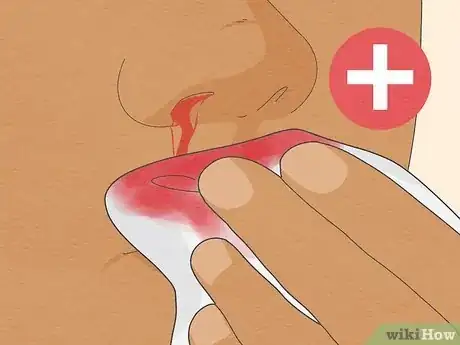









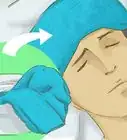




































Medical Disclaimer
The content of this article is not intended to be a substitute for professional medical advice, examination, diagnosis, or treatment. You should always contact your doctor or other qualified healthcare professional before starting, changing, or stopping any kind of health treatment.
Read More...